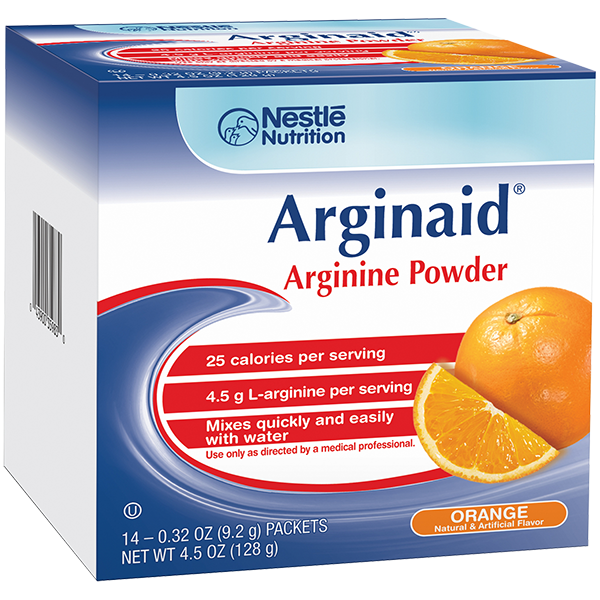This is a poster I presented at a wound care conference two years ago. It’s not earth shattering, it’s just interesting. The patient is a woman in her late 80’s with advanced dementia who was being taken care of lovingly at home by her two daughters. She developed a Stage 4 pressure injury during a bout of pneumonia. Her daughters wanted to try a conservative approach to wound management and were doing a great job of wound care at home, but the wound was not getting smaller. I recommended that they give her two packages of Arginaid a day (Nestle).
Her wound began to get smaller almost right away. Given the challenges of seeing a bedbound patient who has to be transported by ambulance to clinic, as soon as we get into a routine that I know is working, I usually see them only once a month. Things went great for 3 months, but then the wound stopped getting smaller and started to get larger. I went through the list of all the things we were doing — the dressing regimen was fine, the bioburden was being managed, the support surface on her bed was working, so what had changed? I asked about the Arginaid and the daughters told me that it was getting very expensive to keep her on it for so many months so they stopped it. However, that’s the only thing we could see that had changed in her care plan, so they said they’d start ordering it again.
Sure enough, within 3 months of restarting Arginaid, the wound was dramatically smaller and it healed 8 months later. Yes, that is a long time, but going off Arginaid meant it took 7 months longer, as you can see in the graph of wound surface area. I thought this was a really interesting illustration. Sometimes we aren’t sure how much nutritional supplementation really contributes to healing. However, you can clearly see in this case that the wound kept getting smaller only as long as she was taking Arginaid.

Dr. Fife is a world renowned wound care physician dedicated to improving patient outcomes through quality driven care. Please visit my blog at CarolineFifeMD.com and my Youtube channel at https://www.youtube.com/c/carolinefifemd/videos
The opinions, comments, and content expressed or implied in my statements are solely my own and do not necessarily reflect the position or views of Intellicure or any of the boards on which I serve.



